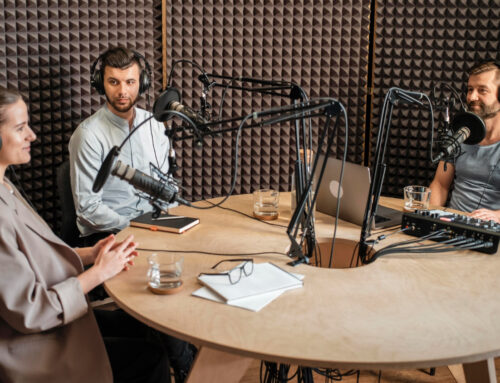Words by Hawwa
I vaguely remember the hectic weekday mornings of my childhood. My mother would frantically try to wake me up early for school every morning, but I would still end up running late in a state of panic, hoping and praying I didn’t forget something and yet, almost always forgetting something anyway. She would often say if my limbs weren’t attached to my body, I would end up leaving them behind too.
I imagine this tradition still remains very much alive, judging from the stories I hear from my sister and her struggles trying to wake my niece up for school. And it makes me wonder, how do children end up learning anything at school after these hectic mornings? We’re constantly told to hurry up lest we miss out. But instead of teaching children to speed up, perhaps it’s time to start teaching them to slow down.
Children today face an inordinate amount of stress and anxiety, from increasing academic pressure as early as kindergarten to external stressors in an ever changing and unpredictable world and most recently, the global uncertainty and anxiety surrounding the Covid-19 pandemic. Although it could be years before we start to truly understand the full impact of this pandemic and its aftermath, studies are already showing that it has led to short term as well as long term psychosocial and mental health implications for children and adolescents. Now more than ever, we need to start teaching children how to develop healthy coping mechanisms. One such mechanism could be teaching children mindfulness.
What is Mindfulness?
Mindfulness can be defined as “a mental state achieved by focusing one’s awareness on the present moment, while calmly acknowledging and accepting one’s feelings, thoughts, and bodily sensations, used as a therapeutic technique.” One way to practice mindfulness is through mindful meditation, a mental training practice that teaches you to slow down racing thoughts, let go of negativity, and calm both your mind and body.
The topic of mindfulness and especially meditation is sometimes met with skepticism within Muslim communities due to its association with other religions and beliefs. I found a reassuring explanation on this topic in a research paper called “How to be a Mindful Muslim – An Exercise in Mindful Meditation” by Justin Parrot (Abu Amina Elias). He writes,
“The fact of the matter, however, is that our righteous predecessors practiced several forms of meditation, in the purely linguistic sense of the word, and through these meditations they achieved advanced spiritual states and enhanced their acts of worship, prayer, and remembrance. The key to reviving their practices is to examine closely how they conceptualized meditation and to emulate their practices within the framework of Islamic creed, worship, ethics, and etiquette. As such, we can even incorporate modern insights from psychology and mindfulness practitioners as long as we remain grounded in Islamic tradition, as the
Prophet ﷺ said, “Wisdom is the lost property of the believer, so wherever he finds it then he has a right to it.”
The concepts of mindfulness and meditation are not inherently rooted in any one religion and these techniques have been used by early Muslim scholars in their spiritual practice as well. As such, it does not contradict with Islamic beliefs and practices in any way.

Benefits of Mindful Meditation
There have been numerous studies and research on the benefits of meditation, specifically on the benefits it provides children in schools. A 2014 meta-review of the impact of meditation in schools showed that it led to higher well-being, better social skills and greater academic skills. Furthermore, students who were taught meditation at school reported higher optimism, more positive emotions, stronger self-identity, greater self-acceptance and took better care of their health, reducing anxiety, stress and depression. Implementing mindfulness programs in schools teaches children essential skills in both schools and in life by teaching them to calm themselves, focus their attention and interact effectively with others. It strengthens their resilience and selfsoothing and provides tools to cope with stressful situations.
The best implementation of mindfulness in classrooms would ideally involve teachers having their own mindfulness practice or at least an understanding of it, and this can be achieved through training courses. Alternatively, schools can look to hire instructors, at least initially, to educate teachers and students on this practice and how they can implement it in both classroom settings as well as in their day to day lives. Mindfulness programs do not only benefit the students, it can improve the teachers’ stress levels and mood as well, which in turn would also benefit students.
Unlike other skills taught to children- like tying their shoelaces or teaching them basic math for instance – the topic of coping mechanisms often does not come up until such a need arises. Unless a child is experiencing a crisis or exhibiting symptoms of anxiety or stress, most parents do not really think of equipping them for such a scenario. Maybe on some level, we would like to believe that our children wouldn’t experience these emotions, but the reality is that we cannot shield children from negative experiences or emotions. It is crucial that we equip children with these vital life skills from an early age, before a crisis hits.
Introducing mindfulness in the classroom does not have to be complicated or long. It can be as simple as setting up a routine at the beginning of the class where children can relax, focus on their breath, and identify their goals for the day. Just a few moments of silence and introspection can do wonders. From an early age, we’re taught to associate productivity with speed and activeness, and consider stillness as wasted time. Mindful meditation teaches us that slowing down is necessary, and sometimes not doing anything can be just as productive.









Leave A Comment